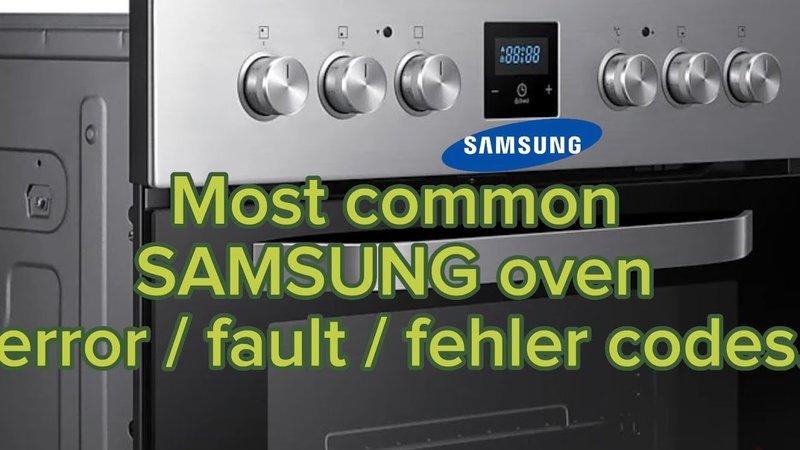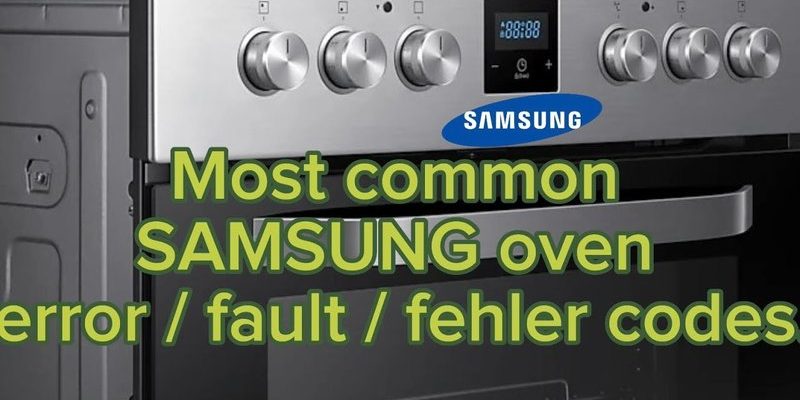
When dealing with appliances, error codes are like little messages telling us something’s off. The Oe code on Samsung ovens and ranges generally relates to problems with the oven or range’s sensor systems. This code often indicates issues with either the moisture sensor or the temperature sensor. These sensors are kind of like your oven’s way of seeing and feeling what’s going on inside. If they detect something unusual, like too much humidity or an incorrect temperature, they send out an alert. Let’s dive deeper to understand the common reasons behind this error and what you can do to resolve it.
Understanding the Role of Sensors in Your Samsung Oven
Before we explore the specific reasons behind the Oe error code, it’s essential to understand the pivotal role sensors play in your Samsung oven. Think of sensors as the appliance’s eyes and ears—constantly monitoring the environment to ensure everything is running smoothly.
In Samsung ovens, these sensors track various environmental factors within the cooking chamber. The temperature sensor makes sure your food is being cooked at the right heat level, while the moisture sensor ensures there isn’t too much humidity building up. Imagine trying to bake a cake without knowing if your oven was at the right temperature. It could end up too gooey or burnt to a crisp! That’s the kind of chaos sensors help avoid by keeping tabs on these crucial details.
When one of these sensors malfunctions, it can throw off the whole operation, much like if you had an inaccurate thermometer while baking. If the sensor detects something out of the ordinary, it prompts the system to generate an Oe error code, essentially waving a red flag to catch your attention. So, knowing this, it’s easier to appreciate why these sensors are so integral to your oven’s performance and why it’s vital to address their issues promptly.
Moisture Sensor Malfunction
One prevalent cause for the Oe error code comes from a malfunctioning moisture sensor. This component works to gauge the level of humidity inside the oven. Picture it as a vigilant lifeguard keeping an eye on the water levels around your culinary creations. When it detects an imbalance, it lets the oven know something’s amiss.
A malfunction might occur if the sensor becomes too dirty or if its connections are loose. Over time, even small amounts of grease, food particles, or dust can accumulate, masking the sensor’s ability to do its job effectively. It’s like trying to look through a foggy window and not being able to clearly see the view outside. You can often resolve this by gently cleaning the sensor with a damp cloth—ensuring it’s clean can restore its functionality.
However, if cleaning doesn’t resolve the issue, you might need to check the sensor’s tightness or any visible signs of wear. If the sensor appears worn out or damaged, replacement might be the better option. When in doubt, consulting Samsung’s customer support or a professional technician can offer valuable guidance.
Temperature Sensor Issues
Another potential culprit behind the Oe error code is trouble with the temperature sensor—like a faulty thermostat in your home disrupting your comfort. If the temperature sensor isn’t functioning accurately, it can misread the internal temperature, leading to incorrect oven performance.
The sensor might not be working correctly due to a buildup of dirt, similar to the moisture sensor, or it could be suffering from more severe wear and tear. Cleaning the sensor might solve minor issues, but if the problem persists, it may require replacement. Don’t worry, it’s often a straightforward fix; however, should you feel uncomfortable handling such repairs, seeking professional help is advisable.
If you’ve tinkered with the sensor and the error code remains, it’s beneficial to verify your oven’s settings and ensure it’s getting the correct power supply. Issues with the power could also result in the sensor not receiving enough current to operate correctly, much like a lamp flickering when it’s not plugged in securely.
Steps to Prevent Future Error Codes
Preventing future occurrences of the Oe error code in your Samsung oven involves a bit of proactive care. Just like how regular check-ups keep our cars running smoothly, periodic maintenance can ensure your oven remains error-free.
Start by making a habit of cleaning your oven and its sensors regularly. After each cooking session, especially when dealing with greasy or moist foods, wipe down any spillage or buildup that might affect sensor performance. Remember, just as a clean windshield provides a clear view, clean sensors can more accurately monitor your oven.
Consider keeping your oven manual handy for troubleshooting tips and insights into its functionality. The manual is like a guidebook for your oven, full of valuable information that can often resolve simple issues without professional repair. Additionally, having a reliable contact for appliance repair can save you stress when something does go awry.
In essence, understanding and caring for your Samsung oven’s sensors can greatly reduce the chances of encountering the Oe error code. By implementing regular maintenance routines, you ensure that your cooking adventures remain uninterrupted, allowing you to focus on creating delicious meals without the hassle of unexpected malfunctions.
